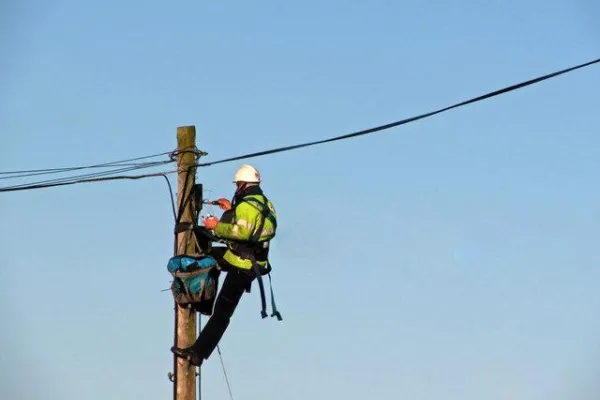Sandy revealed shortcomings of VoIP and wireless

If you lived in the path of Superstorm Sandy and had ditched your old landline, chances were much greater you were out of luck. For many people, both cellphones and power went out, and that meant no telecommunications. Some people are still struggling with it.
After Katrina, the FCC imposed a rule that would have required wireless carriers to provide a minimum of eight hours of battery backup at cell tower locations. But the wireless industry resisted – took the FCC to court – and eventually the agency let the rule die. Even though some wireless companies said they’d complied, most hadn’t. In fact, there was no provision for serious outages.
One industry blog, Light Reading Mobile talked to engineers at the 4G World trade show immediately after Sandy hit. Some said that preparations were simply inadequate.
“Industry attendees we spoke to at the 4G World show,” said Light Reading Mobile, “agreed that battery backup had kicked in after the storm but then simply ran out. In such instances, carriers have to bring in generators or mobile cell sites to bring coverage back while the power is out.”
Emil Olbrich, lead project engineer for the office of law enforcement standards at the National Institute of Standards and Technology, told LRM that present backup wouldn’t be sufficient for the in-progress, federally funded first-responder LTE network. “For public safety, well, it's just not good enough,” Olbrich told them.
But what if you used digital VoIP? Providing the carrier has independent power supply, you might have been fine. But many don’t.
It turns out that the most reliable form of telecommunication is the analog TDM “time division multiplexing" network. That is, corded telephones connected to the public switched copper network. As an article in aol Daily Finance said, “The old, analog phones will typically work in a power outage, because they have their own power source. Did you ever notice there's no separate power cord with an old TDM phone? You simply plug it into the jack on the wall and you're connected: Power and voice service come through the same line.”
This is the old public switched telephone network that companies such as AT&T and Verizon want to phase out, as customers move to wireless (one-third of all households have cut the cord) and VoIP. Cable -- with millions of voice telephony subscribers - delivers its phone service over VoIP. Recently, as we reported earlier, AT&T, said Daily Finance, “will invest $14 billion in wireless and wireline IP broadband networks, where, including managed IT services, the company expects 90% of its future revenue to come from. There's no mention of investment in TDM.”
So, the issue for regulators is how to ensure network reliability as new IP and wireless technologies replace the old public switched network. It's time to impose backup power requirements on the new technologies.
Sandy: The Case for Better Cell Site Backup? (Nov. 2, 2012)
AT&T Wants To Cut the Cord on Your Landline Phone (aol Daily Finance, Nov. 13, 2012)
AT&T to Invest $14 billion in Expansion and Upgrades (Speed Matters, Nov. 6, 2012)
Biden Administration honors CWA steward for rural innovation
CWA Frontier workers sue Connecticut for anti-union contract interference
New CWA program incorporates union basics into IT training



